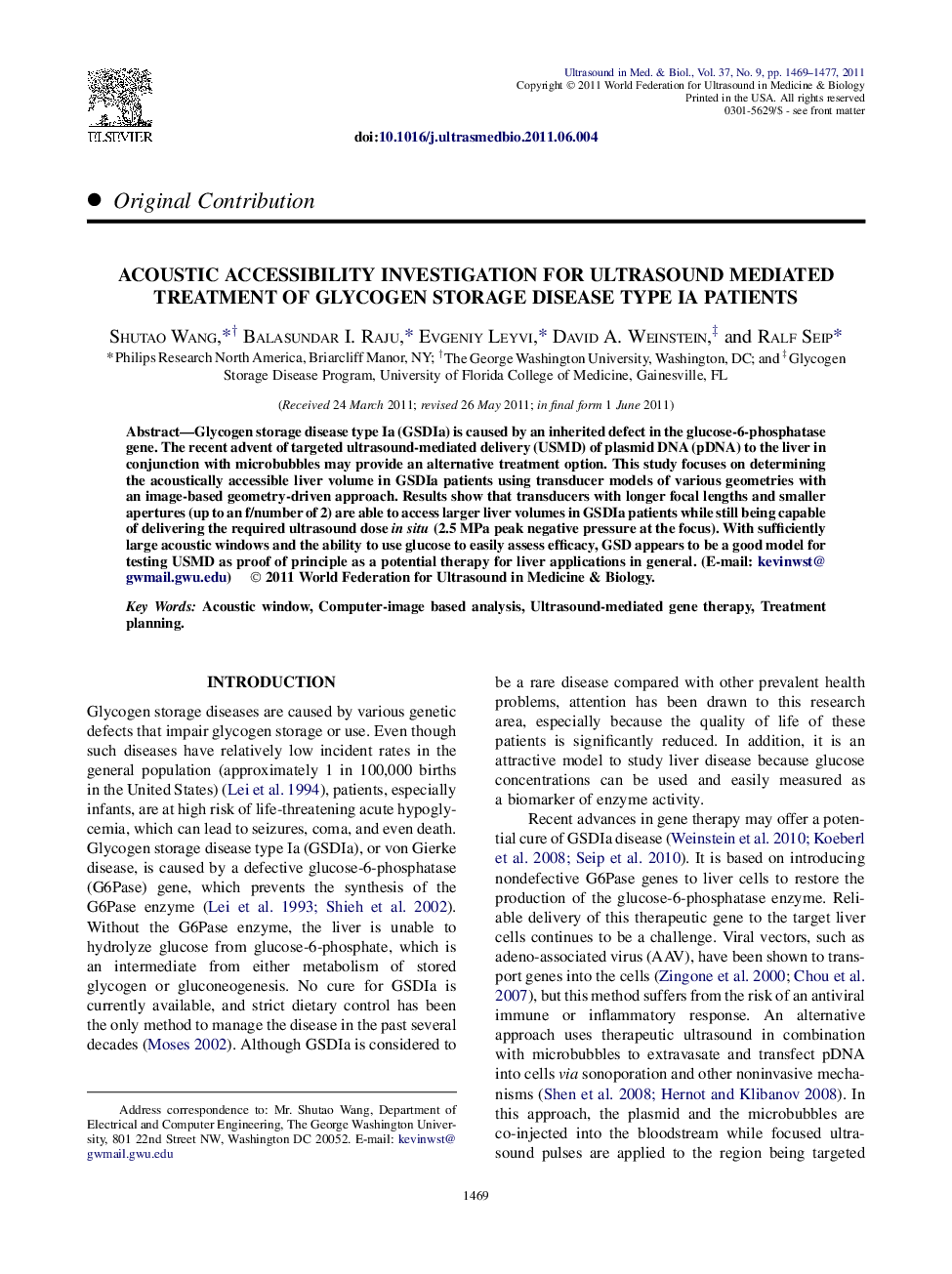| Article ID | Journal | Published Year | Pages | File Type |
|---|---|---|---|---|
| 1760967 | Ultrasound in Medicine & Biology | 2011 | 9 Pages |
Abstract
Glycogen storage disease type Ia (GSDIa) is caused by an inherited defect in the glucose-6-phosphatase gene. The recent advent of targeted ultrasound-mediated delivery (USMD) of plasmid DNA (pDNA) to the liver in conjunction with microbubbles may provide an alternative treatment option. This study focuses on determining the acoustically accessible liver volume in GSDIa patients using transducer models of various geometries with an image-based geometry-driven approach. Results show that transducers with longer focal lengths and smaller apertures (up to an f/number of 2) are able to access larger liver volumes in GSDIa patients while still being capable of delivering the required ultrasound dose in situ (2.5 MPa peak negative pressure at the focus). With sufficiently large acoustic windows and the ability to use glucose to easily assess efficacy, GSD appears to be a good model for testing USMD as proof of principle as a potential therapy for liver applications in general.
Keywords
Related Topics
Physical Sciences and Engineering
Physics and Astronomy
Acoustics and Ultrasonics
Authors
Shutao Wang, Balasundar I. Raju, Evgeniy Leyvi, David A. Weinstein, Ralf Seip,
